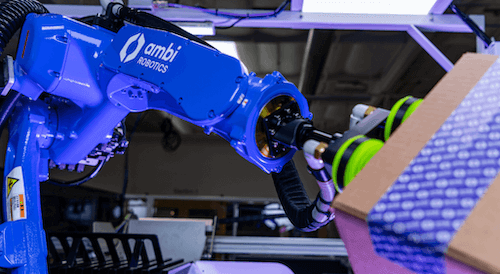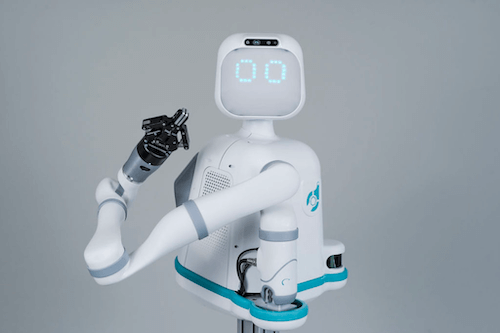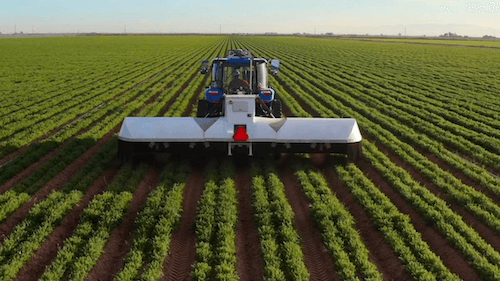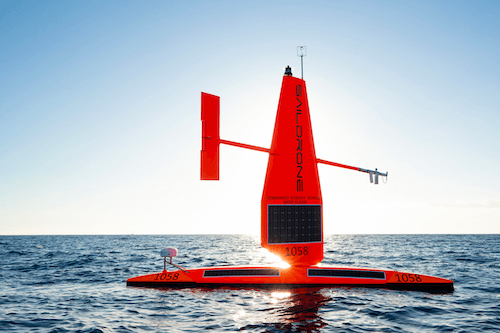HaaS 100 (January 2024)
by Zachary Kimball on November 21, 2023
Hardware-as-a-service (HaaS) is gaining momentum across a variety of industries. Many of the early adopters of HaaS are in robotics, offering robots-as-a-service (RaaS) to decrease barriers to entry and improving overall value to customers. Others offer machine-as-a-service (MaaS), device-as-a-service (DaaS), or equipment-as-a-service (EaaS).
Some companies pitch outcomes more than assets, offering data-as-a-service or platform-as-a-service models. From sorting solutions, autonomous pallet jacks, and medical robots, to automatic weeding and uncrewed ocean mapping, these companies are on the cutting-edge of their fields.
This post is one in a series about modern hardware companies, their business models, and the future of HaaS.
Ambi Robotics
- Founded date: 2018
- Location: Berkeley, California
- Employees: ~60
- Industries: E-commerce, logistics, material handling
- Key customers: Pitney Bowes, OSM Worldwide
- Website: ambirobotics.com
Ambi Robotics offers AI-driven robotic systems designed to optimize and streamline warehouse operations. They focus on order fulfillment, inventory management, and sorting processes. At the core of Ambi’s offer is their proprietary AmbiSort system, a solution that employs advanced machine-learning algorithms to enable robots to efficiently sort and categorize items. The AmbiSort system is designed to adapt and learn in real-time, continuously improving sorting capabilities and adapting to diverse items and changing workflows within warehouses.
Ambi Robotics utilizes the robot-as-a-service (RaaS) model, aiming to provide customers with accessible robot solutions without the burden of upfront capital expenses. The model eliminates barriers to automation for businesses and offers more comprehensive, all-encompassing solutions to meet a wide range of needs.
“Utilizing the robot-as-a-service (RaaS) pricing model has been an effective method to reduce e-commerce logistics costs. It reduces barriers to entry for new supply chain brands to take advantage of automation without upfront costs,” says Jim Liefer, CEO of Ambi Robotics
Vecna Robotics
- Founded date: 1998
- Location: Waltham, Massachusetts
- Employees: ~140
- Industries: warehousing and manufacturing
- Key customers: Petco, John Deere, Caterpillar, FedEx
- Website: vecnarobotics.com
Vecna Robotics specializes in autonomous mobile robots (AMRs) and workflow software. With a focus on automating material handling tasks, their robots are designed to optimize efficiency and productivity in warehouse and industrial settings. Their flagship product line includes autonomous vehicles and robots for material handling, such as the Pivotal AMR series, capable of transporting goods within warehouses autonomously.
Vecna offers their AMRs through robots-as-a-service (RaaS), rolling all costs into an annual fee that includes implementation and maintenance. This model removes the need for high capex investment, and customers are able to swap out hardware types, like tuggers for forklifts, if needed.
Diligent Robotics
- Founded date: 2017
- Location: Austin, Texas
- Employees: 215
- Industries: medical patient care
- Key customers: Mary Washington Hospital, Christiana Hospital
- Website: diligentrobots.com
Diligent Robotics provides hospitals and medical care centers with robotic systems designed to assist healthcare professionals with routine tasks. Their flagship product, Moxi, is an AI-driven robot designed to autonomously manage non-patient-facing tasks, such as delivering supplies and collecting linens, allowing nurses and staff to focus more on direct patient care.
Diligent's focus is on streamlining workflows and contributing to improved patient experiences. Moxi is offered via robot-as-a-service (RaaS) contracts. Diligent collaborates closely with each hospital or clinic to provide services that align with their ever-changing needs.
Verdant Robotics
- Founded date: 2018
- Location: Hayward, California
- Employees: ~50
- Industries: agriculture
- Key customers: Bolthouse Farms, Granstrom Farms
- Website: verdantrobotics.com
Verdant Robotics offers a smart sprayer that targets weeds, reducing chemical use by up to 96% for both organic and conventional growers. The weeds are targeted for removal while others are nurtured to maximize growth.
The Model B Smart Sprayer can spray up to 3.75 acres per hour, using vision cameras and artificial intelligence to identify crop plants and weeds. The Model B works with any specialty crop and kills weeds of all sizes even if they are right next to the crop.
This performance model fits well into a robots-as-a-service (RaaS) offering. Verdant relates RaaS to hiring a custom contractor for agricultural field work or spraying services. RaaS contracts include the robot and all the support needed to successfully perform services.
Saildrone
- Founded date: 2012
- Location: Alameda, California
- Employees: ~240
- Industries: maritime security, ocean mapping, ocean data
- Key customers: National Oceanic and Atmospheric Administration (NOAA), National Aeronautics and Space Administration (NASA), United States Navy (USN)
- Website: saildrone.com
Saildrone’s fleet of uncrewed surface vehicles (USVs) collect high-quality ocean data for a wide variety of applications. Using wind-powered propulsion technology and solar-powered sensors, the USVs are able to collect data in the most remote areas of the ocean, even in the harshest ocean environments.
Saildrone provides in situ ocean data as a fully managed mission service, collected by its fleet of USVs. Saildrone handles transport of the vehicles to the area of operations, launches, deploys, and retrieves them, and delivers high-resolution data in near-real time—all without large upfront customer investment. Data is delivered by its proprietary secure web portal or via API for integration into other common operating pictures (COPs).
"The mission-as-a-service model has been a huge success for our customers. We enable real-time access at scale to critical ocean data in a cost-effective way. Rather than selling our USVs, we deliver the core value for maritime defense and security, ocean mapping, and ocean data,” says Barak Ben-Gal, Chief Financial Officer at Saildrone.
- HaaS (74)
- hardware as a service (74)
- haas100 (40)
- business model (9)
- billing (7)
- contract (4)
- equipment (4)
- RaaS (3)
- accounting (3)
- asset management (3)
- financing (3)
- operations (3)
- MSP (2)
- legal (2)
- managed service provider (2)
- revenue (2)
- robotics (2)
- robots-as-a-service (2)
- DaaS (1)
- MaaS (1)
- actions (1)
- assets (1)
- business model examples (1)
- device-as-a-service (1)
- eaas (1)
- equipment-as-a-service (1)
- finance (1)
- hardware financing (1)
- machine-as-a-service (1)
- pricing (1)
- product update (1)
- sales tax (1)
- solution definition (1)
- tax (1)
- December 2025 (1)
- November 2025 (2)
- October 2025 (2)
- September 2025 (2)
- August 2025 (3)
- July 2025 (3)
- June 2025 (2)
- May 2025 (2)
- April 2025 (2)
- March 2025 (4)
- February 2025 (4)
- January 2025 (3)
- December 2024 (3)
- November 2024 (2)
- October 2024 (2)
- September 2024 (3)
- August 2024 (2)
- July 2024 (2)
- June 2024 (2)
- May 2024 (1)
- April 2024 (2)
- February 2024 (3)
- January 2024 (3)
- December 2023 (3)
- November 2023 (3)
- October 2023 (3)
- September 2023 (1)
- August 2023 (2)
- July 2023 (2)
- June 2023 (1)
- May 2023 (1)
- April 2023 (2)
- March 2023 (1)
- February 2023 (1)






